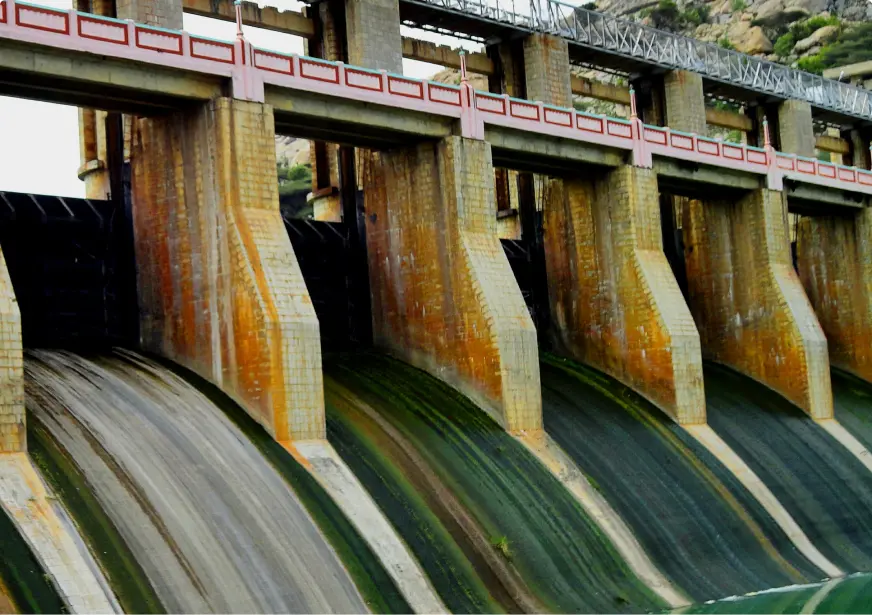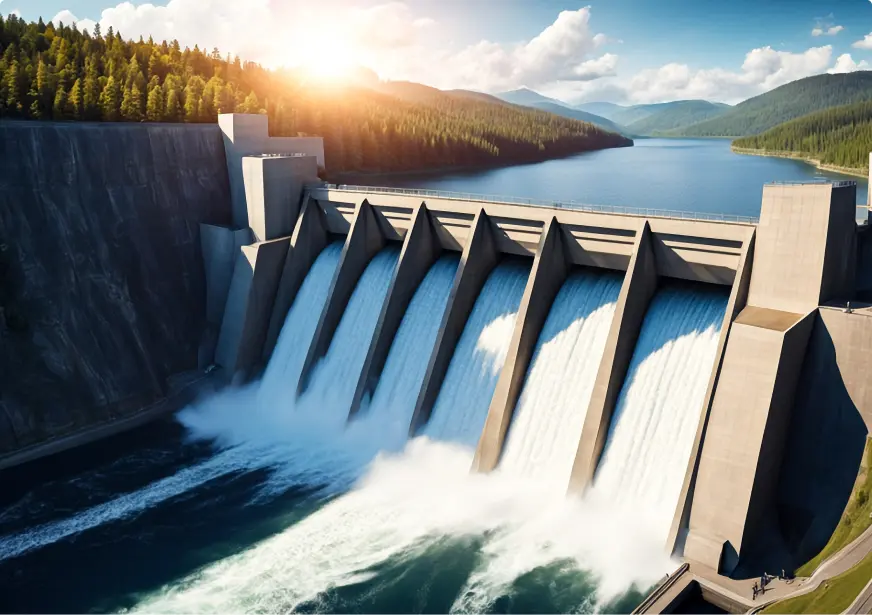
All Services
A hydropower plant harnesses the energy of flowing or falling water to generate electricity. It is one of the oldest and most efficient forms of renewable energy, providing a significant portion of the world's electricity. Hydropower plants range from small-scale installations to large complexes and offer reliable, clean, and cost-effective energy.
Energy Independence
The installation of solar panels involves meticulous planning, precise positioning, and skilled labor to ensure optimal efficiency and performance. First, a thorough site assessment is conducted to evaluate factors like sunlight exposure, shading, and structural integrity.
Components of a Hydropower Plant
A dam is constructed to store water in a reservoir, creating a controlled flow. The reservoir holds the water, which is released through the dam to generate power. This controlled release allows for energy production even during dry periods, ensuring a stable and reliable electricity supply.
Intake and Penstock
Water is directed from the reservoir to the turbines through an intake structure and penstocks. The intake structure includes gates and screens to manage water flow and prevent debris from entering the system. Penstocks are large pipes that convey water under high pressure to the turbines.
Turbines and Generators
Turbines are the core of a hydropower plant, converting the kinetic energy of water into mechanical energy. As water flows through the turbines, it spins the blades, which in turn rotate a shaft connected to a generator. The generator then converts the mechanical energy into electrical energy.
Transmission Lines
Electricity generated by the hydropower plant is transmitted to the grid via transmission lines. These lines carry the electricity to substations, where the voltage is adjusted for distribution to homes, businesses, and industries. Modern hydropower plants use advanced control systems to optimize performance and ensure safety. These systems monitor water flow, turbine operation, and power output, allowing operators to make real-time adjustments.
Hydropower plants play a vital role in the global energy landscape, providing clean, renewable, and reliable electricity. By harnessing the power of water, these plants contribute to sustainable energy solutions and help mitigate the impacts of climate change. Proper planning, design, and maintenance ensure the long-term efficiency and environmental compatibility of hydropower projects.

